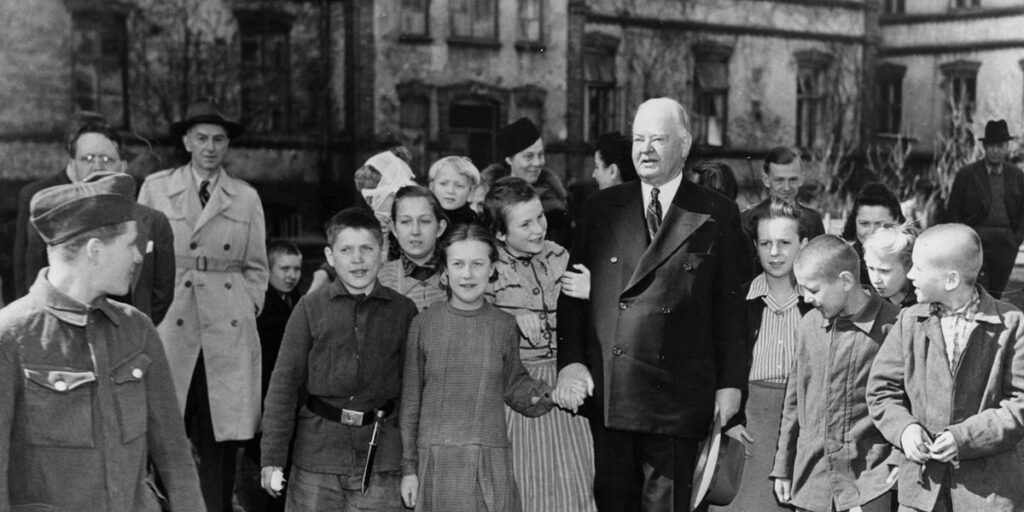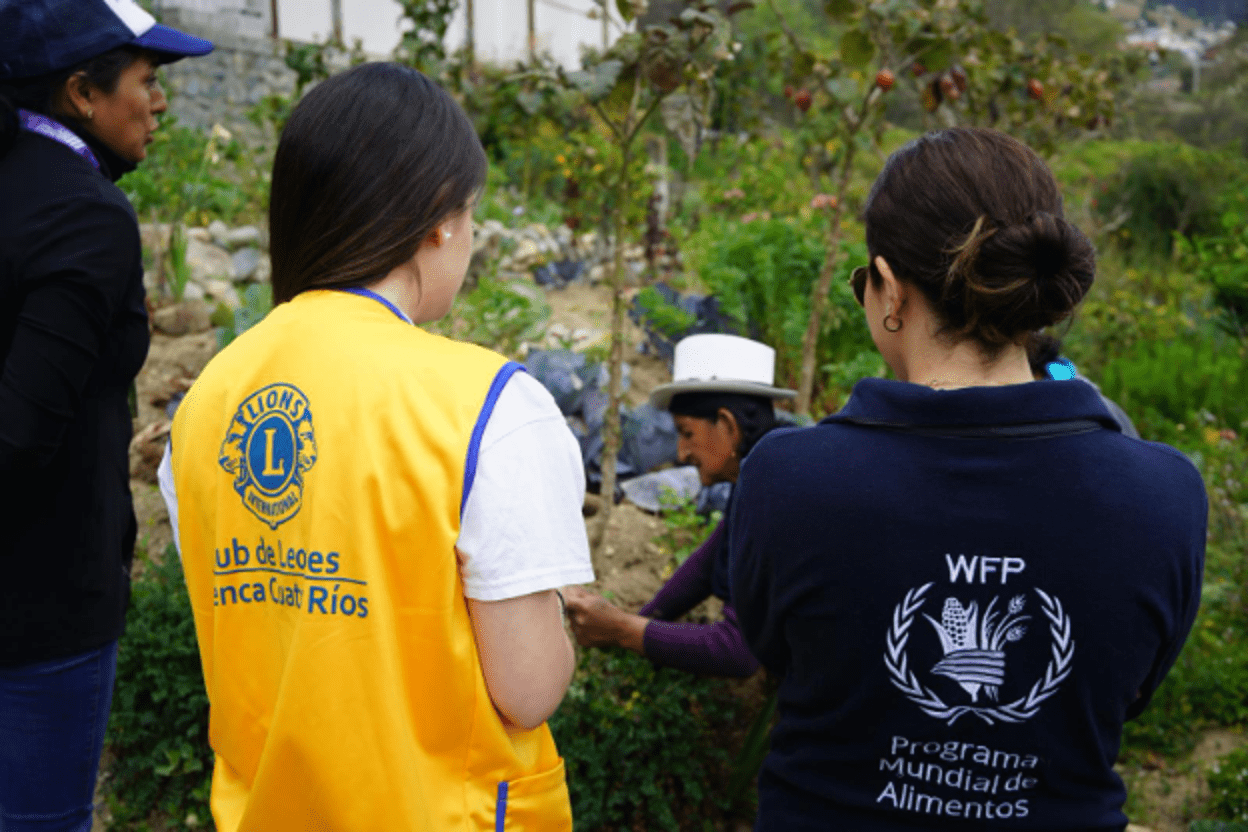In 1812, a massive earthquake rocked Venezuela, devastating the city and leaving thousands of people in urgent need of food and supplies. In response, the U.S. – under the leadership of President James Madison, sent five ships filled with wheat flour to feed survivors.
That shipment marked America’s first foray into foreign assistance. Since then, the U.S. has led the way in global hunger relief. Along the way, there have been a handful of presidents who have made exceptional contributions to this legacy of support. In addition to Madison, below are five who have paved the way in making America the generous nation it is today.
1. President Herbert Hoover

During WWI, famine threatened German-occupied Belgium. The Germans refused to feed Belgium’s civilians, and a naval blockade from Britain cut off the imported food the country relied on. Without help, the Belgians were weeks from starvation – so the U.S. stepped in through the Commission for Relief in Belgium (CRB) to help.
The CRB was led by none other than Herbert Hoover, prior to his presidential career. Hoover and thousands of American volunteers organized a diplomatic feat by securing safe passage for food into the starving nation. Hoover campaigned tirelessly for the committee to ensure it had the funds it needed to operate. In almost three years, the CRB delivered 2.5 million tons of food to Belgium, feeding up to 9 million people a day.
For these efforts and others, Hoover was dubbed “The Great Humanitarian,” and is still honored in Belgium to this day. In the years that followed, Hoover went on to lead the newly created U.S. Food Administration before becoming President in 1929.
2. President Franklin Delano Roosevelt

WWII led to mass displacement and loss throughout Europe. Predicting the need that would exist when fighting ended, President Roosevelt proposed the idea of the United Nations’ first agency – the United Nations Relief and Rehabilitation Administration (UNRRA) – to provide relief to a recovering continent.
The agreement for the UNRRA was signed in 1943 by 44 countries and was the U.S.’ first major venture into multilateral (aka multi-country) humanitarian aid. The agency dissolved in 1947, but not before distributing around $4 billion in food and supplies to people in need – all as a result of President Roosevelt’s benevolent proposal.
3. President Harry Truman

On Oct. 5, 1947, President Truman delivered the first-ever televised address from the White House. He devoted the address to an urgent topic—Europe’s newest enemy: widespread hunger.
Truman asked Americans to ration their own food to help stockpile grain for starving people in Europe who were still recovering from the horrors of WWII. “Their most urgent need is food,” he said in his address. “If the peace should be lost because we failed to share our food with hungry people, there would be no more tragic example in all history of a peace needlessly lost.”
Together with Secretary of State George Marshall, Truman led an effort to provide nearly $15 billion ($100 billion in today’s dollars) to support Europe’s recovery from WWII. Of this, a significant portion went to food aid and re-establishing agricultural production in Europe.
4. President Dwight Eisenhower

President Eisenhower helped create a lasting legacy of food assistance throughout the world. During his presidency, Eisenhower signed the Agricultural Trade Development and Assistance Act, which created Food for Peace, a U.S. program that sent food aid overseas to countries in need. The idea behind it was that feeding hungry people would not only be the right thing to do, it would also promote national security. Today, the U.S. government’s Food for Peace program is the largest donor to WFP.
In addition to creating the program in the U.S., Eisenhower suggested to the UN that other nations come together to spearhead a similar initiative. His proposal was taken into consideration, refined by Senator George McGovern, and the resulting WFP was created during John F. Kennedy’s presidency.
5. President Barack Obama

As technology evolved, humanitarian aid did too. Instead of solely providing in-kind commodities, aid organizations began to think about offering cash assistance as well, depending on the situation. In countries where markets are functioning, cash assistance offers recipients the dignity of choice while stimulating the local economy.
To meet the changing need, President Obama signed the Global Food Security Act into law in 2012. The act introduced a cash-based assistance program to complement providing American-grown commodities for humanitarian relief. The act represents the latest milestone in a long American legacy of feeding the world’s hungry.
***
Although presidents have played a large role, they were only part of a larger ensemble of American policymakers, thought leaders and private citizens who have championed global food security through the decades. They’ve created a nation rooted in generosity – a nation that continues to support a world in need, making it a better place for us all.





